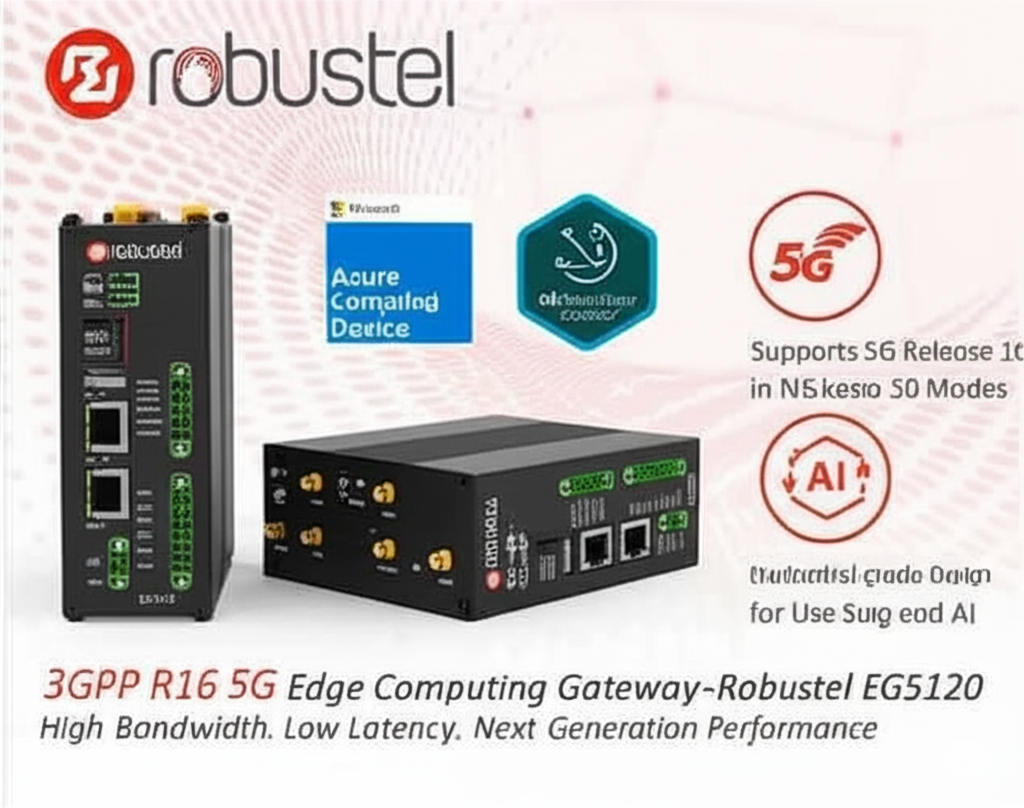
Getting Started with Robustel EG5120 and AWS IoT Greengrass
|
|
Time to read 6 min
|
|
Time to read 6 min
This comprehensive guide is designed for developers and IT professionals looking to set up the Robustel EG5120 as a powerful AWS Greengrass Gateway.
We'll walk you through the entire process, from initial hardware and development environment setup to configuring AWS resources and deploying your first "Hello World" Greengrass component. By leveraging the EG5120's powerful NPU and versatile Debian-based OS, you can harness the full potential of edge AI and remote monitoring.
By the end, you'll have a production-ready foundation for your most demanding edge computing applications.
So, you've decided to leverage the power of Intelligence at the IoT Edge – AWS IoT Greengrass – AWS to bring cloud intelligence to your edge devices. That's a smart move. Greengrass allows you to run Lambda functions, manage containerized applications, and perform machine learning inference directly on your hardware. But this raises a critical question: what hardware should you run it on?
I've seen many brilliant IoT projects, built on powerful cloud platforms like AWS, get stuck when it comes to hardware selection. You can't just run mission-critical industrial logic on a standard development board and hope for the best. You need a device that is as robust and reliable as the cloud services you're deploying. This is where a true AWS Greengrass Gateway comes in. In this guide, we'll show you how to get started with the Robustel EG5120 , an industrial-grade edge gateway officially qualified for AWS IoT Greengrass.
● The Robustel EG5120 Edge Gateway: Think of the EG5120 as the industrial-grade computer that will run your edge applications. It features a powerful Quad-core NXP i.MX 8M Plus CPU with a 2.3 TOPS NPU for machine learning, runs a Debian 11-based OS, and has all the industrial I/O and connectivity you'll need. This is the hardware that makes reliable edge AI possible.
● AWS IoT Greengrass: This is the software from Amazon that extends AWS services to your edge devices. It allows you to build, deploy, and manage device software from the cloud. When paired with the EG5120, AWS IoT Greengrass enhances edge computing by enabling sophisticated workloads directly on your AWS Greengrass Gateway.
The EG5120 is a next-generation industrial IoT edge gateway supporting global 5G/4G/3G/2G networks. Before you begin, get familiar with the hardware:
Setting up your development environment is a critical first step. The EG5120 runs RobustOS Pro, a Debian 11-based OS. You can access it remotely via SSH. Your development PC should have the AWS CLI and Greengrass Development Kit (GDK) installed. The EG5120 firmware comes with essential compilers and runtimes pre-installed:
With all preparations complete, let's begin the core configuration process.
(Note: This section's structure is preserved for easy screenshot insertion.)
First, you need to create and configure the necessary resources in your AWS account.
1. Create AWS IAM User and Group: In the AWS IAM console, create a new user and a user group (e.g., AdminGroup_eg5120) with AdministratorAccess.
Now, let's install the Greengrass core software onto your AWS Greengrass Gateway.
1. Log in to your EG5120 via SSH.
2. Install the required dependencies:
Bash
sudo apt-get update sudo apt-get install python3 python3-pip curl -y 3. Download and unpack the Greengrass installer:
Bash
curl -s https://d2s8p88vqu9w66.cloudfront.net/releases/greengrass-2.7.0.tar.gz | sudo tar xz -C /
4. Run the setup script with the parameters from your AWS IoT setup. This command provisions the device as a core device and connects it to your AWS account. You'll get these values from the AWS console during the setup process.
Bash
sudo -E java -Droot="/greengrass/v2" -Dlog.store=FILE \ -jar ./GreengrassCore/lib/Greengrass.jar \ --aws-region your-aws-region \ --thing-name RobustelGGC \ --thing-group-name your-thing-group \ --component-default-user ggc_user:ggc_group \ --provision true \ --setup-system-service true Let's create and deploy a simple "Hello World" component from the cloud to the edge using the Greengrass Development Kit (GDK) CLI on your development machine.
1. Install GDK CLI:
Bash
python3 -m pip install -U git+https://github.com/aws-greengrass/aws-greengrass-gdk-cli.git 2. Initialize Project: In an empty directory, initialize a new component.
Bash
gdk component init -l python -n HelloWorld 4. Build Component:
Bash
gdk component build 5. Publish Component: This uploads your component to the AWS IoT cloud.
Bash
gdk component publish
6. Deploy Component: In the AWS IoT Greengrass console, create a new deployment, select your EG5120 core device, and add the HelloWorld component you just published. After a few moments, the component will be deployed and running on your gateway!
You have now successfully configured your Robustel EG5120 as a powerful AWS Greengrass Gateway and deployed your first custom component from the cloud to the edge. This powerful combination provides a scalable, secure, and robust foundation for developing sophisticated industrial IoT solutions. From here, you can explore more complex applications, leverage the EG5120’s NPU for AI-driven tasks, and manage your entire fleet of devices remotely. The potential for innovation is now in your hands.
A1: The main advantage is reduced risk and faster deployment. The qualification ensures that the hardware has been tested and verified by AWS to run Greengrass reliably. This saves you from the complex and time-consuming process of validating hardware compatibility yourself.
A2: Yes, absolutely. The EG5120's powerful NPU is designed for this. You can use AWS SageMaker to train your models and then deploy them as Greengrass components to the EG5120 for high-performance, local ML inference.
A3: You have a powerful combination. You use the AWS IoT Greengrass console to manage the software components and deployments. For hardware-level management, like monitoring cellular connectivity, device health, and performing core firmware updates, you would use Robustel's RCMS . The two platforms work together to provide complete lifecycle management.




















